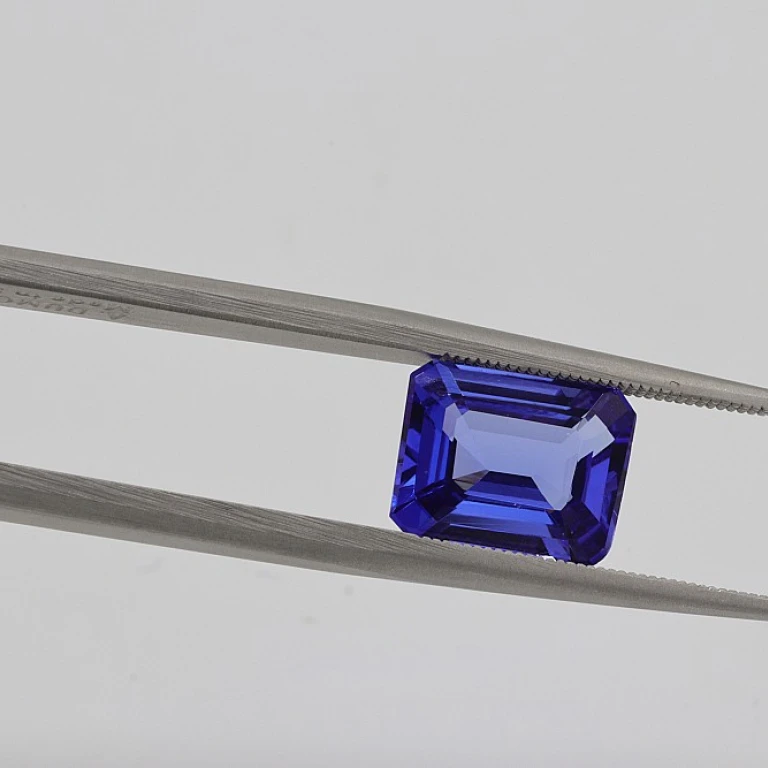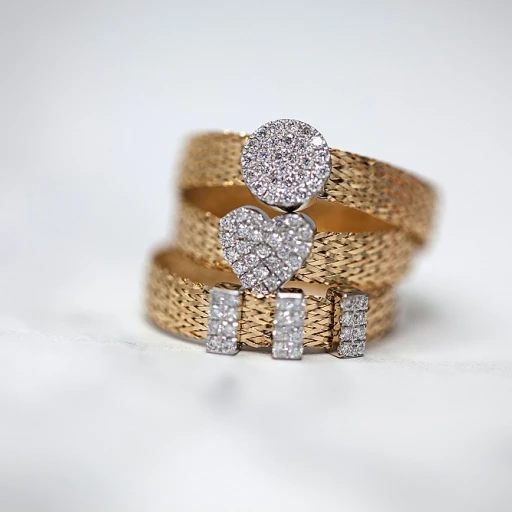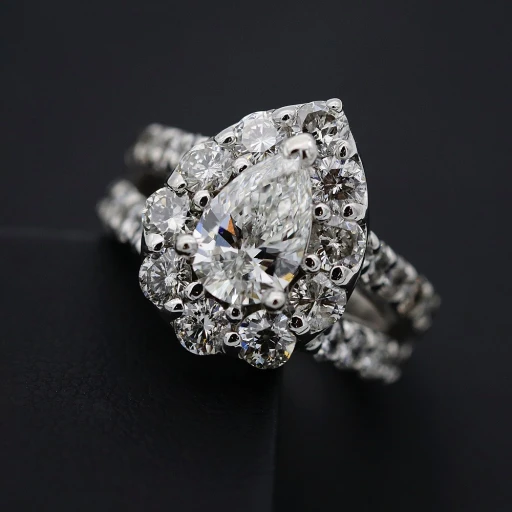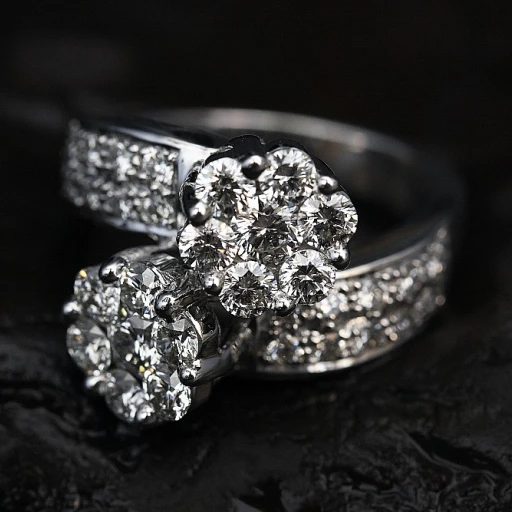Understanding the Emerald Cut
The Elegance Behind the Emerald Cut
The emerald cut, with its unique step-cut facets and elongated rectangular shape, captures a timeless elegance that is often associated with vintage and antique jewelry. This cut is well-suited for sapphires due to its ability to highlight the stone's clarity and color intensity. When paired with a sapphire, whether it’s a brilliant blue or a captivating teal, the emerald cut enhances the gem's natural beauty. Unlike the more traditional brilliant cuts that focus on maximizing sparkle, the emerald cut offers a subtler, sophisticated play of light. This makes it the perfect choice for those who appreciate understated elegance in their jewelry. For those considering an engagement ring featuring this style, the emerald cut offers a modern yet classic appeal. It’s an excellent alternative to the more traditional round cuts. Additionally, with an understanding of sapphire spectra, buyers can better appreciate how varying hues from pink to green and even teal sapphire influence the overall aesthetic of a ring. This particular cut also allows for bold pairings with different ring settings and bands. A sapphire diamond band in white gold, for example, can elevate the overall presentation of the emerald cut sapphire, making it an exquisite choice for both everyday wear and special occasions. For further insights into the captivating nature and the hidden language of colored sapphires, readers can explore more here. This link will deepen your understanding of how sapphire color variations can impact the design and investment value of your jewelry collection.Sapphire: The Gem of Royalty
The timeless appeal of the sapphire
From nobility to the everyday wearer, sapphires have captivated hearts with their striking beauty and rich symbolism. Among gemstones, sapphires have long held a special place as the gem of royalty. Known for their deep, mesmerizing blue hues, sapphires often find a cherished spot in jewelry collections worldwide.
With colors that range from the traditional blue to the unique teal and green, sapphires are versatile stones for various designs, including rings and other pieces. For gemstone enthusiasts seeking something beyond the regular price spectrum, embracing a diversity of colors extends beyond the standard deep blue, offering something truly unique and personal.
As a center stone in engagement rings, the sapphire pairs wonderfully with both gold and white gold bands, offering a classic yet distinctively modern twist. The choice between a traditional blue sapphire or a more vibrant teal sapphire can transform an engagement ring from elegant to extraordinary, showcasing personal style in a meaningful way.
Additionally, sapphires' durability, rivaling that of diamonds, ensures they withstand the test of time. Their hardness makes them perfect candidates for everyday wear, especially when set in well-crafted jewelry pieces like a striking emerald cut engagement ring.
While the allure of sapphires remains strong, understanding the nuances in their color palettes, such as those seen in the various shades and tones of cut blue or green sapphire, adds depth to their appreciation and valuation. Whether regular or lab-created, sapphires continue to represent elegance, making them enduring favorites in fine jewelry collections.
Crafting the Perfect Ring
The Artistry Behind the Emerald Cut Sapphire Ring
Crafting an emerald cut sapphire ring is a meticulous process, embodying both precision and artistry. This specific cut, characterized by its rectangular shape and long stair-step facets, is cherished for its capacity to amplify the depth and clarity of the stone. Integrating a beautiful blue sapphire with an emerald cut accentuates the gem's inherent allure, allowing light to dance across its polished planes. This unique cut is highly distinguished from others, such as the oval or brilliant cuts, offering a sophisticated, minimalist aesthetic that appeals to a wide array of jewelry enthusiasts. In the crafting process, choosing the perfect sapphire is crucial. Whether opting for a deep blue sapphire or exploring options like teal or even a striking green sapphire, each stone offers its own narrative. For an eco-friendly choice, some prefer lab-grown sapphires, which offer the same breathtaking qualities without the environmental impact. To complement the sapphire's vibrant hues, jewelers often mount the emerald cut stone in a variety of metals, such as classic white gold or luxurious yellow gold. Each option provides a contrasting backdrop that can enhance the sapphire's color intensity, making each engagement ring a unique statement piece. Attention to detail is paramount when setting the sapphire. The right setting secures the gem while ensuring it remains the focal point of the ring. Prong settings can be used to elevate the sapphire, allowing maximum exposure to light, whereas bezel settings can offer a sleek modern touch to the ring design. For individuals looking to learn more about how certification impacts the value of such rare gemstones, particularly when considering the investment value, understanding the origins and certifications of the sapphire is essential. In conclusion, crafting an emerald cut sapphire ring is not just about creating a stunning piece of jewelry, but about marrying artistry with tradition, to deliver a truly timeless piece. Whether for an engagement or a luxurious addition to a jewelry collection, these rings maintain their status as a highly coveted choice in the world of fine jewelry.Choosing the Right Setting
Discover the Best Settings for Your Sapphire Ring
Choosing the right setting for your sapphire ring is a vital step in creating a stunning piece of jewelry. The setting not only protects the precious stone but also enhances its beauty and overall appeal. The classic prong setting is popular for sapphire engagement rings, allowing maximum light to enter the stone, which enhances its brilliance. The number of prongs can vary, typically between four to six, giving different aesthetic effects. Another favored choice is the bezel setting. This setting offers even greater protection than prongs by encircling the stone with metal, making it ideal for those with an active lifestyle. Bezels can beautifully complement the blue hue of a sapphire, whether it’s teal, green, or even a pink sapphire. For an opulent touch, the halo setting is a favorite. Here, small surrounding diamonds or gemstones encircle the sapphire, making the center stone appear larger. It’s an excellent choice for those who desire added sparkle without increasing the center stone’s size. Materials matter too. White gold is a timeless choice, complementing the blue tones of sapphire exquisitely. For a more traditional appeal, gold settings offer a classic look that pairs well with green or teal sapphires. Lastly, an emerald cut sapphire ring benefits from settings that showcase its elegant shape. Whether it be a solitaire setting or surrounded by smaller stones, the elongated shape requires a secure and stylish setting to ensure both visibility and protection. Consulting with a jewelry expert can offer further guidance, as they can provide insights into how different settings can impact the stone's appearance and the ring's overall price regular and sale price. Remember, the right setting not only complements the emerald cut but ensures your ring becomes a cherished piece of your collection, whether for an engagement or as a timeless addition to your jewelry lineup.Caring for Your Sapphire Ring
Maintaining Your Sapphire Ring's Radiance
Taking proper care of your sapphire ring is essential to maintain its dazzling appearance, regardless of whether it’s an emerald cut blue sapphire or a pink sapphire engagement ring. Here are some key tips to ensure the longevity and brilliance of your treasured piece:- Regular Cleaning: Sapphires, though durable, can accumulate dirt and oils from daily wear. Clean your ring regularly with warm soapy water and a soft brush to prevent buildup that dulls the gemstone’s luster.
- Safe Storage: When not worn, store your sapphire ring in a soft pouch or a dedicated jewelry box. This practice protects the stone from scratches and accidental damage that can occur from contact with other pieces like diamond rings or gold bands.
- Avoid Harsh Chemicals: Exposure to harsh chemicals can harm the setting and the sapphire. Remove your jewelry before handling household cleaners, perfumes, or chlorine.
- Professional Checks: Take your ring to a professional jeweler for periodic inspections. They can check the mounting and security of the stone, especially important for elaborate settings in white gold or gold emerald cut rings.
- Mindful Wear: While sapphire rings, including those with teal or green sapphires, are suitable for daily wear, be mindful of physical activities that may exert pressure or cause impact on your ring.
The Investment Value of Sapphire Rings
Recognizing the Timeless Worth
When considering the investment value of sapphire rings, excellence and precision craftsmanship play crucial roles. The allure of an emerald cut sapphire ring often lies in its undeniable elegance and the expertise behind its creation. Unlike many other gemstones, sapphires come in a wide array of colors, including the sought-after teal and green hues, each contributing uniquely to the ring's overall charm and potential market value.
Incorporating elements like blue sapphire or sapphire diamond combinations within gold or white gold settings can enhance the piece's worth substantially. These materials offer an enduring appeal and a sense of timelessness, a quality rarely matched by other metals. The emerald cut, with its precise symmetry and depth, adds to the ring's elegance and potential investment returns.
Beyond aesthetics, the investment aspect of sapphire rings lies in their historical significance and rarity. Regular cuts and more unique shapes like oval or emerald cut distinguish these rings in a thriving market, often justifying their place among a jewelry collector's prized assets. Their frequent use in engagement rings signals durability and a trend-forward approach to design that bodes well for future resale opportunities.
It's essential to remember that factors like the carat size, clarity, and origin contribute significantly to a sapphire ring's market price. For instance, a lab-created stone is usually more affordable than a natural one, but they have their appeal due to ethical considerations. Engaging with knowledgeable jewelers or appraisers can provide a comprehensive view of a sapphire ring's regular price and potential sale price trends, ensuring you make a well-informed investment.




